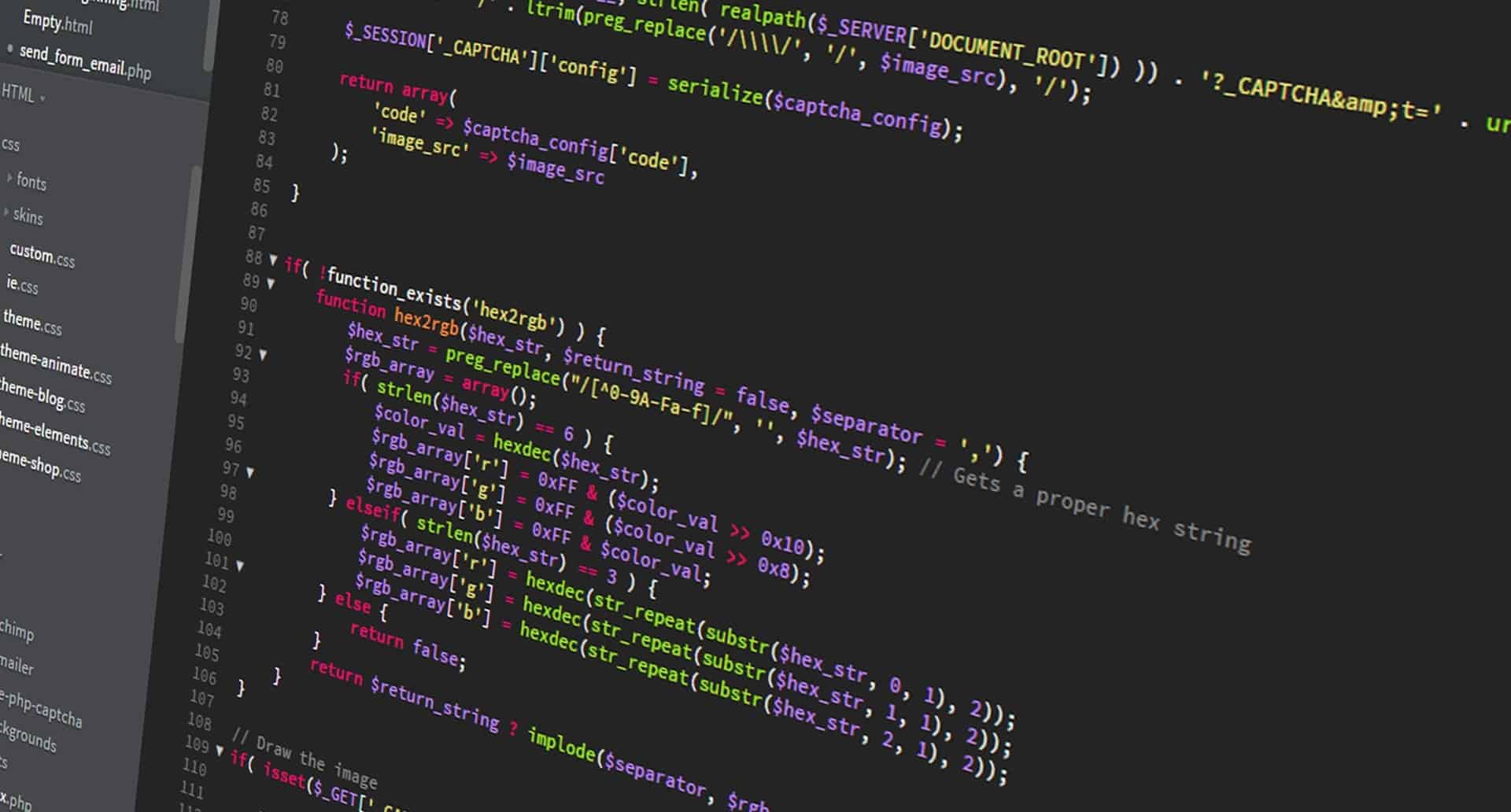The Complete Guide to Plan Leave: Strategic Time-Off Management for Modern Workplaces

In today’s competitive business landscape, 68% of employees report feeling burned out, while companies struggle with unexpected absences that disrupt operations and strain budgets. The solution lies in strategic plan leave management – a proactive approach that transforms time-off from a reactive headache into a competitive advantage.
Plan leave represents more than just tracking vacation days. It’s a comprehensive strategy that balances employee well-being with business needs, ensuring your organization maintains productivity while fostering a positive workplace culture. This guide will walk you through everything you need to know about implementing effective leave planning that benefits both employees and employers.
Whether you’re an HR professional looking to streamline leave processes, a manager seeking better team coverage strategies, or a business owner aiming to improve employee satisfaction while maintaining operational efficiency, this complete guide provides the roadmap to transform your approach to employee time off.
What is Plan Leave and Why It Matters
Plan leave refers to the strategic scheduling and management of employee time off in advance, encompassing all forms of absence from vacation days to family emergencies. Unlike reactive leave management, this proactive approach creates predictability for both employees and employers, enabling better resource allocation and operational continuity.
The importance of plan leave extends far beyond administrative convenience. Organizations that effectively plan leave experience 23% higher employee satisfaction rates and 15% lower turnover compared to those with reactive leave policies. When employees can request leave confidently and employers can anticipate staffing needs, the result is reduced stress for everyone involved.
Modern workplaces face increasing complexity in leave management. With diverse employee needs, varying local laws, and the growing emphasis on work-life balance, businesses must adopt sophisticated approaches to manage employee absence effectively. Plan leave provides the framework to navigate these challenges while maintaining business operations and supporting employee well-being.
The strategic benefits include preventing last-minute staffing shortages, ensuring compliance with labor regulations, reducing administrative burden on HR teams, and creating a fair system that employees trust. Companies implementing comprehensive leave planning report improved team morale and increased productivity during periods when other employees are taking leave.
Essential Types of Planned Leave
Understanding the various leave types forms the foundation of effective leave management. Each type serves different employee needs and requires specific planning considerations to ensure both compliance and operational efficiency.
Annual Leave and Vacation Planning
Annual leave represents the most common form of planned leave, typically ranging from two to four weeks depending on company policies and local laws. Vacation time serves as the cornerstone of employee benefits, directly impacting retention and job satisfaction. Employees who effectively plan vacation time report 31% higher job satisfaction compared to those who don’t use their full leave entitlements.
Successful vacation planning requires advance coordination, especially during peak periods like summer months and public holidays. Organizations should encourage employees to submit requests at least 8-12 weeks in advance for major vacations, allowing sufficient time for coverage planning and project scheduling. The key is creating an annual leave planner that visualizes team availability throughout the year.
Consider implementing a rotation system for popular vacation periods, ensuring fair access while maintaining adequate staffing levels. Some companies use incentive programs to encourage vacation during traditionally slower business periods, helping balance employee preferences with operational needs.
Medical and Family Leave Planning
Medical and family leave requires specialized attention due to legal requirements and the sensitive nature of health-related absences. The Family and Medical Leave Act (FMLA) provides eligible employees up to 12 weeks of unpaid leave for serious health conditions, childbirth, or caring for family members.
Maternity leave and paternity leave planning often involves the longest absence periods, typically ranging from 6-16 weeks. Early communication about anticipated leave dates allows for comprehensive handover planning and temporary coverage arrangements. Employees should initiate discussions about maternity leave or paternity leave as soon as possible, ideally in the second trimester for pregnancy-related leave.
Medical leave documentation requires careful record keeping to ensure compliance with both federal and local laws. HR software systems can streamline this process by automatically tracking certification requirements and leave balances while maintaining confidentiality.
Personal and Emergency Leave
Personal leave covers various reasons including family emergencies, legal matters, bereavement, and personal development opportunities. While these situations are often less predictable than vacation time, establishing clear policies helps employees understand their options and managers prepare for potential absences.
Bereavement leave typically provides 3-5 days for immediate family members, though policies vary significantly between organizations. Sabbatical leave, while less common, offers extended periods for professional development or personal growth, usually available after several years of service.
Emergency leave policies should address both the employee’s need for immediate time off and the business’s need for minimal disruption. Creating standardized procedures for handling requests during emergencies helps ensure consistent application and reduces stress during difficult times.
How to Plan Leave Effectively
Effective leave planning begins with understanding your organization’s policies and establishing clear processes that work for both employees and managers. The goal is creating a system where requesting leave becomes straightforward while maintaining operational efficiency.
Establishing Planning Processes
Start each year by reviewing company leave policies and communicating annual leave balances to all employees. This transparency helps employees make informed decisions about when and how to use their time off. Create a master calendar that shows major business periods, project deadlines, and company events to help employees plan around critical times.
Implement a standardized leave request process using either digital forms or hr software that captures essential information including dates, duration, reason for absence, and coverage plans. The request should trigger approval workflows that consider team capacity, business needs, and policy compliance automatically.
Digital leave management systems provide real time updates on team availability, helping managers make informed decisions about approval timing. These systems can integrate with existing calendars like google calendar or microsoft teams, ensuring all stakeholders stay informed about upcoming absences.
Creating Coverage Plans
Successful leave planning requires robust coverage strategies that prevent disruption when employees are absent. Cross-training programs ensure multiple team members can handle critical responsibilities, reducing dependency on any single individual.
Develop detailed handover templates that employees complete before extended absences. These should include current project status, upcoming deadlines, key contacts, and specific instructions for handling urgent matters. Schedule handover meetings between departing employees and their coverage team to ensure smooth transitions.
Consider implementing buddy systems where employees partner to provide mutual coverage during planned absences. This approach not only ensures continuity but also provides professional development opportunities as employees learn additional skills.
Technology Integration
Modern leave management requires sophisticated tracking systems that handle complex calculations for different leave types, accrual rates, and legal requirements. User friendly platforms allow employees to check their leave balances, submit requests, and track approval status without involving HR for routine inquiries.
Integration with payroll systems ensures accurate compensation during paid leave periods while maintaining detailed employee records for compliance purposes. Mobile access enables remote employees to manage leave requests and approvals from anywhere, supporting flexible work arrangements.
Automated reporting features help managers track team leave patterns, identify potential coverage gaps, and make data-driven decisions about staffing needs. These insights prove valuable for workforce planning and budget forecasting.
Best Practices for Leave Management
Implementing proven best practices transforms leave management from a reactive process into a strategic advantage. These approaches help organizations balance employee needs with business requirements while maintaining compliance and operational efficiency.
Policy Development and Communication
Clear policies form the foundation of effective leave management. Policies should specify leave entitlements, accrual rates, carryover rules, and approval procedures in language that employees easily understand. Regular communication about policy updates ensures all stakeholders remain informed about their rights and responsibilities.
Consider creating different policy frameworks for various employee categories, such as full-time, part-time, and temporary workers. This flexibility helps accommodate diverse workforce needs while maintaining fairness and compliance with local laws.
Establish blackout periods during critical business times when leave requests may be restricted or require special approval. Communicate these periods well in advance, typically at the beginning of each year, so employees can plan accordingly.
Approval Workflows
Streamlined approval processes reduce administrative burden while ensuring appropriate oversight. Implement tiered approval systems where routine requests can be approved quickly by direct managers, while extended leave or complex situations may require additional review.
Set reasonable response times for approval decisions, typically 5-10 business days for routine requests and longer for complex situations requiring documentation review. Automated reminders help ensure timely responses and prevent requests from being overlooked.
Create escalation procedures for situations where initial approval is denied or when conflicts arise between employee requests and business needs. These procedures should include clear appeal processes and criteria for making final decisions.
Managing Peak Leave Periods
Summer vacation months and December holidays create predictable challenges that require proactive planning. Analyze historical leave patterns to identify peak periods and develop strategies for maintaining adequate coverage.
Consider implementing maximum percentage limits on team members who can be absent simultaneously, typically 20-30% depending on team size and business requirements. Use rotation systems to ensure fair access to popular vacation periods while maintaining operational capacity.
Temporary staffing solutions can supplement internal coverage during peak periods. Develop relationships with staffing agencies or freelancers who can provide project-based coverage when multiple employees are taking leave simultaneously.
Employer Strategies for Managing Planned Leave
Successful leave management requires strategic thinking that aligns employee benefits with business objectives. Forward-thinking employers use leave management as a tool for talent retention, productivity improvement, and competitive advantage.
Developing Comprehensive Leave Policies
Effective leave policies balance legal compliance with business needs while supporting employee well-being. Research local laws thoroughly to ensure policies meet minimum requirements while potentially exceeding standards to attract top talent.
Consider offering enhanced benefits such as additional personal days, mental health leave, or flexible leave options that allow employees to take time in smaller increments. These enhancements can differentiate your organization in competitive job markets.
Regular policy reviews ensure continued relevance as business needs evolve and local laws change. Involve employees in policy development through surveys or focus groups to understand their needs and preferences.
Technology Solutions for Leave Management
Modern leave management system platforms automate complex calculations, reduce errors, and provide transparency for all stakeholders. Look for systems that integrate with existing HR infrastructure while offering scalability for future growth.
Key features to prioritize include automated accrual calculations, approval workflows, calendar integration, mobile access, and comprehensive reporting capabilities. The system should handle multiple leave types while maintaining compliance with various legal requirements.
Consider implementation timelines carefully, allowing sufficient time for data migration, staff training, and system testing before going live. Phased rollouts can help identify issues early while minimizing disruption to ongoing operations.
Building Manager Capabilities
Managers play a crucial role in leave management success, making training and support essential for effective implementation. Provide comprehensive training on policy interpretation, approval procedures, and coverage planning strategies.
Develop decision-making frameworks that help managers balance competing priorities when multiple employees request leave for the same period. These frameworks should consider factors such as business criticality, employee seniority, and advance notice provided.
Regular manager check-ins help identify challenges and best practices that can be shared across the organization. This ongoing support ensures consistent application of policies and continuous improvement in leave management effectiveness.
Legal Considerations and Compliance
Navigating the complex landscape of leave-related laws requires careful attention to federal, state, and local requirements. Compliance failures can result in significant penalties while also damaging employee trust and organizational reputation.
Federal Law Requirements
The Family and Medical Leave Act (FMLA) establishes baseline requirements for eligible employees, providing up to 12 weeks of unpaid leave for qualifying reasons. Understanding eligibility criteria, notification requirements, and job protection provisions is essential for proper administration.
The Americans with Disabilities Act (ADA) requires reasonable accommodations for disability-related leave needs, which may extend beyond standard FMLA provisions. Interactive dialogue with employees helps identify appropriate accommodations while maintaining business operations.
The Fair Labor Standards Act (FLSA) governs vacation pay policies, particularly regarding payout requirements upon termination. Clear policies about vacation accrual, usage, and payout help ensure compliance while managing costs.
State and Local Regulations
Many states have enacted paid sick leave laws that exceed federal requirements, creating additional compliance obligations. States like California, New York, and Washington have comprehensive paid leave programs that require careful coordination with existing policies.
Local laws may impose additional requirements, particularly in major metropolitan areas. Regular legal updates help ensure continued compliance as the regulatory landscape evolves.
Consider working with employment law specialists to review policies and procedures regularly, especially when operating in multiple jurisdictions with varying requirements.
Documentation and Record Keeping
Proper documentation protects both employees and employers while ensuring compliance with legal requirements. Maintain detailed employee records of all leave requests, approvals, and related communications.
Medical certification requirements must be handled with appropriate confidentiality while ensuring sufficient documentation for legal compliance. Establish secure systems for storing sensitive medical information separately from general personnel files.
Regular audit procedures help identify potential compliance gaps before they become serious issues. These audits should review documentation practices, policy applications, and approval decisions for consistency and legal compliance.
Common Leave Planning Challenges and Solutions
Even well-designed leave management systems face predictable challenges that require proactive solutions. Understanding these common issues and implementing preventive strategies helps maintain smooth operations year-round.
Holiday Season Clustering
The period between Thanksgiving and New Year’s Day creates the most significant leave clustering challenge for most organizations. Employees naturally want time with family during holidays, creating potential staffing shortages during an already complex business period.
Implement fair rotation systems that allow employees to alternate preferred holiday periods from year to year. Some organizations use lottery systems for popular periods, while others use seniority-based scheduling combined with minimum staffing requirements.
Consider offering incentives for employees who work during peak holiday periods, such as additional personal days, premium pay, or preferred scheduling for other times of the year. These incentives help ensure adequate coverage while recognizing employee sacrifices.
Last-Minute Coverage Needs
Sick days and family emergencies create unavoidable last-minute absences that test even the best-planned coverage systems. Develop emergency protocols that clearly define roles and responsibilities when coverage is needed immediately.
Maintain lists of qualified temporary staff or contractors who can provide short-term coverage for critical functions. Building these relationships before emergencies occur ensures faster response times when urgent needs arise.
Cross-training programs become essential for handling unexpected absences. Ensure multiple employees can perform critical functions, reducing vulnerability when key staff members are unexpectedly absent.
Unequal Leave Distribution
Some employees consistently use all their leave entitlements while others rarely take time off, creating potential coverage imbalances and burnout risks. Monitor usage patterns and proactively encourage appropriate leave usage across all team members.
Implement “use it or lose it” policies carefully, ensuring employees have reasonable opportunities to use accrued time while preventing excessive carryover that creates future coverage challenges.
Consider mandatory minimum leave requirements for employees in high-stress positions or those who consistently avoid taking time off. This approach protects both employee well-being and long-term productivity.
Managing Complex Approval Processes
Overly complex approval processes can frustrate employees and create administrative bottlenecks. Streamline procedures by automating routine approvals while maintaining appropriate oversight for complex situations.
Establish clear decision criteria that help managers make consistent approval decisions. These criteria should balance employee needs with business requirements while ensuring fair treatment across all requests.
Regular process reviews help identify bottlenecks and improvement opportunities. Employee feedback provides valuable insights into process effectiveness and areas needing attention.
Measuring Leave Management Success
Effective leave management requires ongoing monitoring and continuous improvement based on key performance indicators. Establishing baseline metrics and regular measurement helps organizations optimize their approach over time.
Key Performance Indicators
Leave utilization rates provide insight into whether employees are actually using their leave entitlements. Target utilization rates of 80-90% of annual leave balances indicate healthy usage patterns that support work-life balance without creating coverage challenges.
Unplanned absence rates should remain below 2% annually, with higher rates potentially indicating policy problems, inadequate coverage planning, or employee engagement issues. Tracking trends helps identify emerging problems before they become serious.
Employee satisfaction surveys should include specific questions about leave policies and management effectiveness. High satisfaction scores correlate with better retention and productivity outcomes.
Cost Analysis
Calculate the total cost of leave management including direct payroll costs, coverage expenses, and administrative time. Understanding these costs helps justify investments in improved systems and processes.
Overtime costs related to leave coverage can indicate inadequate staffing or poor coverage planning. Tracking these expenses helps identify opportunities for more cost-effective coverage strategies.
Administrative time spent on leave management should decrease with effective systems and processes. Measure time spent on routine tasks like processing requests, tracking balances, and handling inquiries.
Continuous Improvement
Regular policy reviews ensure continued effectiveness as business needs and employee expectations evolve. Annual reviews should consider usage patterns, cost trends, and employee feedback to identify improvement opportunities.
Benchmark against industry standards and best practices to identify areas where your organization might enhance its approach. Professional associations and industry surveys provide valuable comparison data.
Technology upgrades and process improvements should be evaluated regularly to ensure your leave management system continues meeting organizational needs efficiently.
Technology Solutions for Leave Management
Modern technology transforms leave management from a manual, error-prone process into an automated system that benefits everyone involved. The right technology solutions reduce administrative burden while improving accuracy and employee satisfaction.
Automated Tracking Systems
Contemporary leave management system platforms automatically calculate complex accrual rates, track multiple leave types, and ensure compliance with various legal requirements. These systems eliminate manual calculation errors while providing real-time visibility into leave balances for both employees and managers.
Integration capabilities allow leave systems to work seamlessly with existing payroll, HR information systems, and calendar applications. This connectivity ensures data consistency across all platforms while reducing duplicate data entry requirements.
Mobile accessibility has become essential as workforces become more distributed. Employees expect to submit requests, check balances, and receive notifications from their smartphones, while managers need mobile approval capabilities for timely decision-making.
Self-Service Capabilities
Employee self-service portals dramatically reduce HR workload by allowing staff to manage routine leave-related tasks independently. Employees can view their leave balances, submit requests, track approval status, and access policy information without contacting HR.
Manager self-service features enable supervisors to approve requests, view team calendars, and generate reports without requiring HR intervention. This capability speeds up approval processes while giving managers better visibility into team availability.
Automated notifications keep all stakeholders informed about request status changes, upcoming absences, and balance updates. These proactive communications reduce inquiries and ensure everyone stays informed about important leave-related information.
Reporting and Analytics
Comprehensive reporting capabilities provide insights into leave usage patterns, cost trends, and policy effectiveness. Standard reports should include utilization summaries, approval processing times, and compliance tracking metrics.
Predictive analytics help organizations anticipate future leave needs based on historical patterns and known events. This capability supports better workforce planning and budget forecasting.
Custom reporting options allow organizations to track metrics specific to their industry or business model. Flexibility in report generation ensures the system can adapt to changing analytical needs over time.
Building a Positive Workplace Culture Through Leave Management
Strategic leave management contributes significantly to positive workplace culture by demonstrating organizational commitment to employee well-being. When employees feel confident about taking time off without negative consequences, trust and engagement increase substantially.
Encouraging Leave Usage
Many employees hesitate to use their full leave entitlements due to workload concerns or cultural pressure to always be available. Organizations must actively encourage appropriate leave usage through both policy and cultural messaging.
Leadership modeling plays a crucial role in establishing healthy leave-taking norms. When executives and managers visibly take vacation time and respect others’ time off, it signals that the organization truly values work-life balance.
Regular communication about the importance of rest and renewal helps reinforce the message that taking leave is not only acceptable but encouraged. Share research about productivity benefits and employee well-being improvements associated with adequate time off.
Supporting Return-to-Work
Smooth transitions back to work after extended leave periods help employees feel valued and supported. Structured return-to-work processes should include catch-up meetings, project updates, and gradual reintegration when appropriate.
Avoid overwhelming returning employees with excessive workload or unrealistic catch-up expectations. Instead, provide reasonable time to review developments and resume full productivity gradually.
Consider offering flexible return options such as part-time schedules or reduced responsibilities during initial return periods, particularly after extended medical or family leave.
Creating Fair Access
Ensure leave policies and practices provide equitable access across all employee groups, avoiding unconscious bias that might favor certain demographics or job levels. Regular review of approval patterns can help identify potential fairness issues.
Develop clear criteria for handling competing requests during peak periods, ensuring decisions are based on legitimate business factors rather than personal preferences or assumptions.
Transparent communication about decision-making processes helps build trust and reduces perceptions of favoritism in leave management.
Future Trends in Leave Management
The landscape of leave management continues evolving as employee expectations change and new technologies emerge. Understanding these trends helps organizations prepare for future challenges and opportunities.
Expanded Leave Categories
Mental health awareness is driving demand for specific mental health leave options beyond traditional sick leave. Progressive organizations are beginning to offer dedicated mental health days or expanded personal leave for wellness purposes.
Caregiving responsibilities extend beyond traditional family definitions, with employees increasingly needing time to care for elderly parents, chosen family members, or community members. Flexible leave policies accommodate these evolving family structures.
Professional development leave is gaining popularity as organizations recognize the value of continued learning. Sabbatical programs and conference attendance support both employee growth and organizational capability development.
Technology Integration
Artificial intelligence will increasingly support leave management through predictive analytics, automated decision-making for routine requests, and intelligent scheduling suggestions that optimize coverage.
Integration with wellness platforms and health monitoring systems may provide insights into leave patterns related to employee well-being, helping organizations proactively address potential issues.
Blockchain technology could provide secure, immutable record keeping for leave transactions while enabling seamless information sharing across organizations and jurisdictions.
Regulatory Evolution
Legislative trends suggest continued expansion of mandated leave benefits, particularly for family and medical reasons. Organizations must stay informed about emerging requirements and prepare for implementation.
Global workforce management creates complexity as organizations navigate varying leave requirements across different countries and jurisdictions. Standardized global policies with local adaptations become increasingly important.
Privacy regulations will continue affecting how organizations collect, store, and share leave-related information, requiring ongoing attention to data protection requirements.
Conclusion
Strategic leave management represents a fundamental shift from reactive absence handling to proactive workforce planning. Organizations that master this approach experience measurable improvements in employee satisfaction, operational efficiency, and competitive advantage.
The key to success lies in balancing employee needs with business requirements through clear policies, effective technology, and supportive culture. When employees trust that they can take necessary time off without negative consequences, they become more engaged and productive during working hours.
Implementation requires commitment from leadership, investment in appropriate systems, and ongoing attention to continuous improvement. However, the benefits – including reduced turnover, improved morale, and better compliance – far outweigh the initial investment.
Start implementing these plan leave strategies today by reviewing your current policies, assessing technology needs, and engaging with employees about their time-off preferences and challenges. Remember that effective leave management is not just about tracking vacation days – it’s about creating a workplace where people can thrive both professionally and personally.
The future belongs to organizations that recognize employee well-being as essential to business success. By developing comprehensive, strategic approaches to plan leave, you position your organization for sustained growth while supporting the people who make that growth possible.



